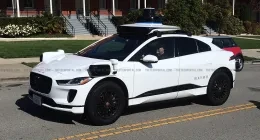US Space Agency NASA is undoubtedly the biggest name in the game when it comes to the space industry (even though private competitors like SpaceX are now catching up). The American space agency, sticking to its legacy, has achieved another massive breakthrough, as Ingenuity, the mini-helicopter launched by NASA to study Earth’s red neighbor Mars, has successfully survived its first night out on the surface of Mars, despite being welcomed by the frigid surface that’s known to be present there.
Accordingly, the Agency has deemed this feat to be a “major milestone” for the craft, or, more precisely (and in NASA’s words as per its statement released on Monday), ‘rotorcraft’.
The craft first came in contact with the surface of the Red Planet on Saturday, after being dropped from the Perseverance Rover, which came in contact with the planet’s surface back on February 18th, by landing in the Jazero Crater.
Until Saturday, the rover had ‘preserved’ Ingenuity, by providing it the ideal conditions for functioning. After detaching from it, however, the craft was left on its own (or so it must have seemed to it, since the NASA scientists constantly had their eyes on it), as it used its own fuel-powered battery to power a vital heater, that prevented the unshielded electrical components from cracking if they froze, which would have been possible in the absence of the heater, owing to the chilling nights on Mars, where the minimum recorded temperature has been 90 degrees Celsius or 130 degrees Fahrenheit.
Ingenuity Project Manager, Mimi Aung, expressed delight over the feat, and said, “But we now have confirmation that we have the right insulation, the right heaters, and enough energy in its battery to survive the cold night, which is a big win for the team. We’re excited to continue to prepare Ingenuity for its first flight test”.
Ingenuity deputy operations lead, Teddy Tzanetos, said, “We actually survived the first night. That is huge, that was one of the huge, huge achievements that we’ve been looking forward to.”
Now what remains to be tested are the motors and rotor blades of the craft, as it gears up for its first ever flight, which is scheduled to take place not before the evening of April 11, provided all goes well. This will make it the first aircraft to attempt to make a controlled, powered flight over another planet. In fact, since it is the first craft to attempt flight on Mars, it has also been designed to pay a tribute of sorts to the first aircraft that attempted flight over the earth, along with its creators, the Wright Brothers. Ingenuity has carried a piece cloth to Mars, which was obtained from the cloth which had covered one of the wings of the first aircraft designed by the Wright Brothers, as a salute to the feat. Its flight attempt will also coincide with two major historic events, the Diamond Jubilee of the first space flight by a human, and the 40th anniversary of the launching of the Columbia space shuttle, mankind’s first victory over space.
During its first flight, Ingenuity will have to climb up to a height of approximately 10 feet or three meters, at a rate of around 3 feet (1 meter) per second. It will then hover at that height for around 30 seconds, before gently touching back down on the surface. During the flight, it will take high-resolution pictures of the Jezero Crater. The total duration of its mission is 30 Martian sols (31 Earth days), during which, several flights have been planned, and the mission is said to be “frontloaded with excitement”.
Perseverance chief engineer for robotic operations, Vandi Verma, said, “We found a perfect location. It meets all the requirements of the airfield that we wanted: it’s nice and flat, and it has just the right amount of rocks — we wanted some amount of rocks so that the cameras on the helicopter can do good feature detection — but good landing spots could be identified and also the slopes were appropriate.”
This craft is one of the most light-weight developed by NASA, at only 4 pounds, and took some 85 million dollars to develop.
The Tech Portal is published by Blue Box Media Private Limited. Our investors have no influence over our reporting. Read our full Ownership and Funding Disclosure →






